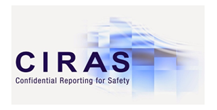STREET WORKS QUALIFICATION REGISTER (SWQR)
QUALIFICATION FOR OPERATIVES: O4-REINSTATEMNET OF SUB-BASE & BASE IN NON-BITUMINOUS MATERIALS
Pre-Requisite:
Street Works Assessment Standards – Reinstatement of Sub-Base and Base in Non-Bituminous Materials
Certificate Aim
This certificate has been designed to allow the candidate to demonstrate the skills and knowledge required to reinstate sub-base and base in non-bituminous materials. The candidate will be able to prepare the subgrade to receive subsequent layers. The candidate will be able to identify, select and reinstate materials to be used for the sub-base or base correctly using the correct equipment. The candidate will also be able to correctly identify and safely dispose of surplus materials and materials that cannot be re-used.
Reinstatement of sub-base and base in non-bituminous materials
Learning Outcome 1 Prepare the backfill layer to receive subsequent layers
Assessment criteria:
1.1 remove loose and unacceptable materials from the area to be reinstated using suitable equipment
1.2 identify and correct backfill layer defects using approved materials and suitable equipment
1.3 use the appropriate equipment to check and confirm that the backfill layer is suitable and provides adequate depth to complete the remaining footway or carriageway layer construction.
Learning Outcome 2 Understand how to prepare the backfill layer for subsequent layers
Assessment criteria:
2.1 state why loose and unacceptable materials are removed from the area to be reinstated
2.2 state how loose and unacceptable materials are removed from the area to be reinstated
2.3 state the purpose and requirements for a firm backfill layer
2.4 identify materials that can be used to replace an inadequate backfill layer
2.5 define how potential backfill layer defects are identified and corrected
2.6 state the potential consequences if backfill layer defects are not corrected.
Learning Outcome 3 Select and store materials for sub-base and base
Assessment criteria:
3.1 identify and select excavated materials that are suitable for re-use or disposal
3.2 identify imported materials suitable for use in sub-base and base
3.3 unload imported materials safely on site
3.4 store all materials safely on site to prevent degradation.
Learning Outcome 4 Understand how to select materials for sub-base and base
Assessment criteria:
4.1 identify the different types of excavated and imported materials that are suitable for reinstating sub-base and base
4.2 define the permitted range of alternative reinstatement materials (ARMs), stabilised materials for fill (SMFs) and other materials for use as surround to apparatus
4.3 define how excavated materials suitable for re-use should be stored on site to prevent degradation
4.4 state how to safely unload and store imported materials on site
4.5 state how to prevent the obstruction or damage of essential facilities and street furniture.
Learning Outcome 5 Reinstate the sub-base and base layers
Assessment criteria:
5.1 select reinstatement equipment that is:
(a) suitable to the material type and excavation dimensions
(b) in working condition and safe to use
5.2 identify the level to which the sub-base and base layers should be reinstated
5.3 reinstate the sub-base and base layers to the specified level using the correct quantities of materials
5.4 calculate the materials required to achieve full compaction of the layer construction
5.5 use selected compaction equipment to adequately compact the materials and layer thickness
5.6 complete the sub-base and base layer construction to specifications
Learning Outcome 6 Understand how to reinstate the sub-base and base layers
Assessment criteria:
6.1 define the factors that influence the selection of equipment for the prescribed operation
6.2 state how to measure the specified level of each layer
6.3 state the checks required to confirm that the sub-base and base layer has been constructed to the correct specifications.
Learning Outcome 7 Dispose of surplus materials
Assessment criteria:
7.1 identify materials that are unsuitable for re-use or surplus to requirements
7.2 Store surplus materials and those unsuitable for reuse in safe temporary storage
7.3 ensure materials for disposal are loaded safely for transportation.
Learning Outcome 8 Understand how to dispose of surplus materials
Assessment criteria:
8.1 define how materials that are unsuitable for re-use or surplus to requirements are identified
8.2 state the importance of storing unsuitable and re-usable materials separately
8.3 state when surplus materials should be removed from site.
Learning Outcome 9 Follow safe working practices
Assessment criteria:
9.1 follow current relevant health and safety regulations, standards and other legislation relating to:
(a) working practices within the construction environment
(b) working practices specific to any practical task that they are required to carry out
9.2 identify the current relevant health and safety regulations, standards and other legislation that must be applied in relation to:
(a) working practices within the construction environment
(b) working practices specific to any practical task that they are required to carry out
8.4 leave the site in a clean and safe condition
8.5 describe how to leave the site in a clean and safe condition.
Evidence Requirements / Scope
Some terms, used in the assessment criteria, cover a range of situations, as follows:
1. Equipment includes:
(a) Hand tools – including square and round mouth shovels, hand pick, hard bristle broom, measuring tape, hand rammer
(b) powered equipment – including vibrotamper, vibrating plate, percussive rammer and vibrating roller.
2. Safe working practices include:
(a) safe use of tools and equipment
(b) PPE (including, as necessary: high visibility jacket or waistcoat, hard hat, ear defenders, gloves, protective footwear, waterproof clothing, eye protection visor or goggles, dust mask)
(c) use of risk assessment methods to identify and control hazards on site
(d) precautions to minimise danger or inconvenience to road users
(e) precautions to minimise danger or inconvenience to site personnel
(f) precautions to minimise damage to equipment or apparatus.
3. Specifications and procedures include:
(a) Specification for the Reinstatement of Openings in Highways
(b) Safety and Street Works and Road Works – A Code of Practice.
(c) Health and Safety Guidance 47, Avoiding Danger from Underground Services
(d) Health and Safety Guidance 150, Health and Safety in Construction
(e) manufacturers’ operating procedures for powered tools and plant.
4. Materials identified for reinstating sub-base and base (roadbase) include:
(a) Granular Type 1 sub-base material
(b) excavated granular sub-base material Class A
(c) category 3 cement-bound material (CBM3)
(d) foamed concrete.
5. Materials for disposal include:
(a) unsuitable surplus materials
(b) surplus materials that are suitable for re-use.
6. Utilities apparatus includes:
(a) plastic and metallic gas mains
(b) plastic and metallic water mains
(c) sewers and drains
(d) high- and low-voltage electricity cables
(e) telecommunications and television cables
(f) fibre optic cables.
7. Highways services includes:
(a) highway drainage
(b) culverts
(c) land drains
(d) Street lighting and traffic signal equipment
(e) highways/road with special engineering controls. Assessment Requirements and Guidance
Assessment for this unit consists of practical observations and a multiple-choice knowledge examination to cover the requirements of the learning outcomes.
Current requirements for practical observations, including Assessor and Internal Quality Assurer qualifications and facilities requirements are provided in the HAUC (UK) The Street Works Assessment Strategy.



